By Air
Table of Contents
I - Indroduction
II - Synergy
__________________________________________________________________________________________________
 I - Indroduction
I - Indroduction
Teambuilding is the most important aspect of competitive Pokemon play, and thus is an important skill to have. However, the art of Teambuilding may not be intuitive; newer players often just use the "6 most powerful Pokemon" for their team, rather than Pokemon that work well together. This article's purpose is to teach you how to Teambuild effectively by taking into account Synergy and Cores. To illustrate the importance of Teambuilding, we can use the analogy of driving. Your team is the car, and you are the driver; a well-made, high-performance car will be much easier to drive than a shoddy one. Having a better team allows you to win games easier, and with less effort.
II - Synergy
What is Synergy?
Synergy - The interaction or cooperation of two or more organizations, substances, or other agents to produce a combined effect greater than the sum of their separate effects.
Synergy, to put it simply, is how well two Pokemon work together. This is an essential part of Teambuilding as it separates a well-made team from a team consisting of random Pokemon. Teams that lack Synergy are prone to having most or all of their team swept or walled by certain Pokemon, as they lack the necessary Checks and Counters to these threats. On the other hand, having good synergy allows your team to sweeping or wall the opponent's team with ease. There are two different types of synergy: synergy through typing and synergy through Checks and Counters.
Synergy through typing
Synergy through typing is when two pokemon resist or is immune the others weaknesses. This allows both to freely switch between each other without taking much damage, by switching into a predicted attack which they resist.
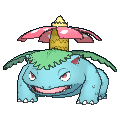
 One example of effective type synergy is Venasaur and Heatran. Venasaur has 4 weaknesses; Psychic, Flying, Fire and Ice. Heatran, on the other hand, is resistant to all of them bar Fire, which it's immune to. Heatran is weak to Ground, Fighting and Water. Venasaur resists both Fighting and Water while is hit neutrally by Ground. This almost perfect type synergy allows them to freely switch in from each other an apply both defensive and offensive pressure on the opposing team
One example of effective type synergy is Venasaur and Heatran. Venasaur has 4 weaknesses; Psychic, Flying, Fire and Ice. Heatran, on the other hand, is resistant to all of them bar Fire, which it's immune to. Heatran is weak to Ground, Fighting and Water. Venasaur resists both Fighting and Water while is hit neutrally by Ground. This almost perfect type synergy allows them to freely switch in from each other an apply both defensive and offensive pressure on the opposing team
Synergy through checks and counters
Synergy through checks and counters takes a different approach at synergy; instead of each Pokemon covering each other's weaknesses through their typing, check and counter synergy involves two pokemon which work well together by removing each other's specific checks and counters. This type of synergy aims to give the other Pokemon a much easier time doing what it's good at, whether it's walling or sweeping, by removing Pokemon that stop them from doing it.
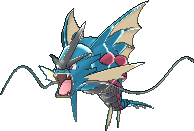
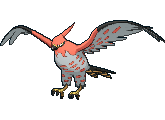 Mega Gyarados and Talonflame are the perfect example of this kind of synergy. While they don't have the best type synergy, the excel in beating each other's counters and opening sweep opportunities for each other. Mega Gyarados is a deadly sweeper, but is often halted by the likes of Kedleo, Ferrothorn and Skarmory. Talonflame, on the other hand, takes out these pokemon without a worry with its super effective attacks. Talonflame is also a great sweeper, but also has its fair share of counters, such as Heatran, Tyranitar and Hippowdown. Mega Gyarados destroys these pokemon, making this a great synergetic pair through checks and counters.
Mega Gyarados and Talonflame are the perfect example of this kind of synergy. While they don't have the best type synergy, the excel in beating each other's counters and opening sweep opportunities for each other. Mega Gyarados is a deadly sweeper, but is often halted by the likes of Kedleo, Ferrothorn and Skarmory. Talonflame, on the other hand, takes out these pokemon without a worry with its super effective attacks. Talonflame is also a great sweeper, but also has its fair share of counters, such as Heatran, Tyranitar and Hippowdown. Mega Gyarados destroys these pokemon, making this a great synergetic pair through checks and counters.
What are cores?
Cores are a group of two or more pokemon who are synergetic with there typings, with there checks and counters, or both. Cores are often self sufficient and are often used as the centre of team and are built around.
Types of Cores
There are 2 types of cores which have unique goals and play styles: Offensive Cores and Defensive Cores. Offensive cores are focused on eliminating as many of the opposing pokemon with high powered attacks. The Pokemon in offensive cores aim to remove each other's checks and counters through there offensive synergy, to open up a sweep for there partners. Offensive cores primarily have sweepers or bulky attackers that often attack differently than each other. Defensive cores are focused primarily on defensive type and check and counter synergy. The main goal for Pokemon in this type of core is to remove offensive threats for their partners so the opposing team has trouble dealing any damage whatsoever. Defensive cores mainly consist of walls or very bulky attackers who have an extreme amount of type synergy with each other.
Building your own cores
When teambuilding, it isn't uncommon to accidentally build a great core just by taking into account synergy when teambuidling. However, coming up with a core on the spot is harder. When trying to build a core, it is important to avoid picking two Pokemon that seem to have good type synergy straight up. Most new players often only take into account synergy through typing when teambuilding and building cores. While this can sometimes form effective cores, type synergy alone just won't cut it, especially for offensive cores. By taking into account both types of synergy, cores become much more effective and easier to use.
A good way to start when building a core is to select one Pokemon, and identify its weaknesses in both typing and check and counters. Then, try to find another Pokemon that complement these weaknesses the best possible, while also taking into account your second Pokemon's weaknesses. Also take into account the Pokemon's base stats. For example, the classic core of Skarmory and Chansey is effective purely on how different there base stats are, Skamory being extremely physically bulky while Chansey being extremely Specially Bulky. Also, you should never forget to test. Often the first two Pokemon you test will look good together, but in reality, they aren't that effective together. By testing you identify the cores weaknesses as a whole, and might find a more effective Pokemon to complete your cores. Finally, it should be noted tips are not limited to building cores, they can also work when your trying to build a team.
IV - Example Cores
Offensive Cores
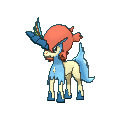
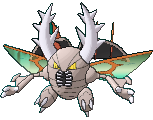
Keldeo + Pinsir
This offensively orientated core aims to dismantle opposing walls with high powered attack from both sides of the spectrum; to open up a sweep for each other and end the game as quickly as possible. Whilst this core lacks type synergy, it makes up for it with its excellent check and counter synergy. Pinsir's devistating attacks are not taken easily by many; but those who can, such as Zapdos, Skarmory, Rotom-W, Lando-T, Hippowdon and Gliscor, are dismantled by Keldeo, who scores 2HKOs on every Pokemon listed with OHKOing Landorus-t, Hippowdon and Gliscor. On the other hand, Keldeos onslaught is stopped by the likes of Venasaur and Amoongus, both of which are annihilated by Pinsir. Keldeo and Pinsir have two different roles in this core: Keldeo functions as primarily a special wallbreaker and thus uses Choice Specs, while Pinsir functions as a mid to late game sweeper and a revenge killer and thus uses Swords Dance and Quick Attack. However, if the opposing team is somewhat stall-ish, Pinsir can be used as a wallbreaker that destroys the common Venasaur + Heatran core and opens up a sweep for Keldeo.
Even with me going on about how good this core is - there is still threats to it that you need to look out for. Talonflame is one of the biggest threats to this core, as it can outspeed both Pinsir and Keldeo with Gale Wings and OHKO both with a strong Brave Bird. Specially Defensive Zapdos can be a pain, as while it is uncommon, it scores an OHKO on both even without attack investment. Thundurus is similar to Zapdos; while it's OHKOed by Keldeo, it Outspeeds it and OHKOs it with its strong STAB thunderbolt. Latias and Latios are also a pain; as they can Outspeed both Keldeo and Pinsir and both OHKO them. Excadrill is a great partner thanks to its Ground immunity and ability to spin away rocks, allowing it to make Thundurus less of a threat and giving Pinsir easier switch-ins. A Talonflame counter is greatly appreciated. Heatran is your best choice, as it has great type synergy with Pinsir and Keldeo.
Keldeo @ Choice Specs
Ability: Justified
EVs: 252 SpA / 4 SpD / 252 Spe
Timid Nature
- Scald
- Hydro Pump
- Secret Sword
- Icy Wind
Pinsir @ Pinsirite
Ability: Mold Breaker
Happiness: 0
EVs: 252 Atk / 4 Def / 252 Spe
Jolly Nature
- Frustration
- Quick Attack
- Earthquake
- Swords Dance
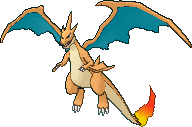
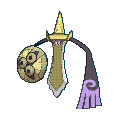

Mega Chariard Y + Aegislash + Keldeo
This core is standard in any team focused around the deadly sweeper that is Mega Charizard Y. Charizard's great special defence and access to Roost works in tandem with its massive special attack to switch in repeatedly and deal tones of damage. However, Charizard still has stuff that it can't break through, such as Chansey, Heatran and Specially Defensive Hippowdon. Keldeo has good synergy with Charizard, taking Water and Rock type attacks for it, while also demolishing most of the Pokemon that Charizard fails too beat by itself. Aegislash serves as a pursuit trapper that can trap and remove Latias and Latios, two huge threats to the core. It can also check other various threats, such as Slowbro, Terrakion and Calm Mind Clefable. Furthermore, Aegislash can be used to attract Pokemon that Keldeo can switch into with ease, such as Mandibuzz and Hippowdon.
If your going to have anything on your team while using this core, it would be hazard removal. Without it, Charizard can not function to its full potential, even to the point that it can't function at all. There are many hazard removal choices that you can use, including but not limited too Latios, Latias, Mandibuzz, and Zapdos. Offensive Threats to this core include Talonflame, Mega Charizard X and Thundurus. Taking this into account, physical walls are greatly appreciated. Two good options are Hippowdon and Quagsire, as they both have great type synergy with the core and deal with Talonflame and Charizard X well. Furthermore, using a Quagsire with 38 Special Defense EVs allows it to check Thundurus.
Charizard @ Charizardite Y
Ability: Blaze
EVs: 252 SAtk / 4 SDef / 252 Spd
Timid Nature
IVs: 0 Atk
- Fire Blast
- Solar Beam
- Focus Blast
- Roost
Keldeo @ Choice Specs
Ability: Justified
EVs: 4 HP / 252 SAtk / 252 Spd
Timid Nature
IVs: 30 HP / 2 Atk / 30 Def / 30 SAtk / 30 SDef
- Hydro Pump
- Secred Sword
- Hidden Power Flying
- Scald
Aegislash @ Leftovers
Ability: Stance Change
EVs: 240 HP / 252 SAtk / 16 Spd
Quiet Nature
- King's Shield
- Iron Head
- Pursuit
- Shadow Ball

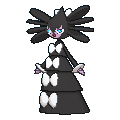
Mega Gyarados + Gothitelle
This unusual looking core focuses on Mega Gyarados Late-Game sweeping. Now, Mega Gyarados is an excellent late-game sweeper with it's great bulk and high attack, but it does have its fair share of flaws. It is easily walled by the likes of Slowbro, Skarmory, Mandibuzz and Ferrothorn, along with Chesnaught & Mega Venasuar if lacking Ice Fang and Kyruem-B if Lacking Stone Edge. If Gyarados has Stone Edge instead of Ice Fang, Kyurem-B is out of the equation. Now that he's gone, Gothitelle can Trap and remove All of the before mentioned threats with one of the best abilitys in the game, and remove them with Hidden Power Fire, Thunderbolt, and Psychic. This core works best when Gyarados isn't sent into play until it's checks and counters are removed by Gothitelle. If Gyarados stays at full Health, it can come in on something that can't touch it, such as Greninja, and force it out while possibly getting 2 dragon dances off. If Gothitelle has done its job, there's not much that can stop Gyarados after it has set up. Gyarados can switch in early game if you need to lure its counters in, but it is generally not safe. Gothitelle only use after trapping is death fodder, but if it's job was done it can never be called dead weight to a team.
There are a few things that are a danger to this core, mainly Conkeldor and Breloom. Conk and Breloom can both revenge kill Gyarados, while Gothitelle cant do anything about it as Conkeldor has Knock off and Breloom can put it to sleep. Conkeldor can be delt with to some extent by postponing the Mega Evolution of Gyarados, but the power loss is very notiable. Talonflame makes a great partner due to its ability to remove both of these Pokemon. Gothitelle greatly appreciates support from Pokemon with U-Turn or Volt-Switch, allowing it to trap much easier. Landorus-T and Rotom-W are good options and also lure in many of Gyarados' checks for Gothitelle.
Gyarados-Mega @ Gyaradosite
Ability: Mold Breaker
EVs: 4 HP / 252 Atk / 252 Spd
Adamant Nature
- Stone Edge
- Waterfall
- Earthquake
- Dragon Dance
Gothitelle @ Choice Specs
Ability: Shadow Tag
EVs: 84 HP / 252 SAtk / 172 Spd
Modest Nature
IVs: 0 Atk
- Psychic
- Hidden Power [Fire]
- Thunderbolt
- Trick
Defensive Cores



Mega Venasaur + Heatran + Quagsire
This famous defensive core utilities an extreme amount of defensive type and check and counter synergy to fight off many of the most prominent sweepers in the Metagame. As demonstrated in the example for type synergy, Mega Venasaur and Heatran have an incredible amount of type synergy. This allows them to fend off huge threats such as Terrakion, Latios, Latios, Talonflame, Rotom-W and Keldeo, which neither of them could do by themself. Quagsire rounds of the core by removing powefull set-up sweepers such as Bisharp, Charizard X and Mega Pinsir. Along with this, it has a great amount of the synergy with both Heatran and Mega Venasaur.
Venusaur @ Venusaurite
Ability: Chlorophyll
EVs: 248 Hp / 252 Def / 8 SpA
Relaxed Nature
- Giga Drain
- Leech Seed
- Synthesis
- Sludge Bomb
Heatran @ Leftovers
Ability: Flash Fire
EVs: 248 HP / 220 SpD / 40 Spe
Calm Nature
- Lava Plume
- Toxic
- Protect
- Taunt
Quagsire @ Leftovers
Ability: Unaware
EVs: 252 HP / 252 Def / 4 SpD
Bold Nature / Relaxed Nature
- Scald
- Recover
- Toxic
- Earthquake
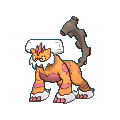
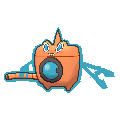
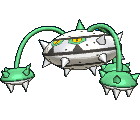
Landorus-T + Rotom-W + Ferrothorn
Landorus-Therian @ Assault Vest
Ability: Intimidate
EVs: 252 Spd / 252 Atk / 4 HP
Jolly Nature
- Earthquake
- Knock Off
- Stone Edge
- U-turn
Rotom-Wash @ Leftovers
Ability: Levitate
EVs: 252 HP / 216 SDef / 44 Spd
Timid Nature
- Volt Switch
- Hydro Pump
- Will-O-Wisp
- Pain Split
Ferrothorn @ Rocky Helmet
Ability: Iron Barbs
EVs: 252 Def / 252 HP / 4 Atk
Impish Nature
- Gyro Ball
- Leech Seed
- Thunder Wave
- Stealth Rock
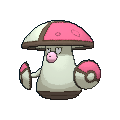

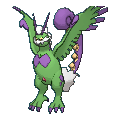
Slowbro + Amoongus + Tornadus-T
Slowbro @ Leftovers
Ability: Regenerator
EVs: 252 HP / 252 Def / 4 SDef
Bold Nature
IVs: 0 Atk
- Scald
- Ice Beam
- Slack Off
- Thunder Wave
Tornadus-Therian (M) @ Assault Vest
Ability: Regenerator
EVs: 160 SAtk / 216 Spd / 132 HP
Timid / Hasty Nature
- Hurricane
- Focus Blast
- Knock Off
- U-turn
Amoonguss @ Leftovers
Ability: Regenerator
EVs: 252 HP / 40 Def / 216 SDef
Calm Nature
- Spore
- Giga Drain
- Foul Play
- Clear Smog
If you need any more cores for your teambuilding needs, check out this thread for a whole collection of great cores for you to use.
V - Teambuilding
Using cores as the basis of your team
Due to most cores being generally self efficient, they are often used as the center of a team and do the most work in battles. However, cores are far from perfect. For example, the classic core of Venasaur, Heatran and Quagsire is easy beaten by the likes of Landorus and Kyurem-B. A Special wall such as Slyveon or Chansey is then added to patch up the cores weakness and allow that core to function better. This way of teambuilding can be done to any core to allow it to reach its full potential.
Using analyses and outside sources
Smogon and other outside sources have a variety of things that can help build cores, teams, and test synergy. The "Team Options" and "Checks and Counters" section in Smogon Anylises is very helpful for teambuilding and building cores. bReakMyTeam is a great tool to test your team or core for threats. Finally, Marriland's Synergy Calculator is great for testing synergy.
VI - Conclusion
Hopefully, after reading this guide, you have gained some knowledge on how how to effectively teambuild, and learnt how the best team builders make their team the best it can be. With this guide, the challenge won't be to teambuild around a certain Pokemon, the challenge will be to choose one. Just remember, even with the endless viability rankings and articles that say which Pokemon are effective and which pokemon are effective with them, there is also another thing that is endless: your creativity.
Table of Contents
I - Indroduction
II - Synergy
- What is Synergy?
- Synergy through Typing
- Synergy though checks and counters
- What are cores?
- Types of Cores
- Building your own cores
- Offensive Cores
- Defensive Cores
- Using Cores as the basis of your team
- Using Analyses and other sources
__________________________________________________________________________________________________
Teambuilding is the most important aspect of competitive Pokemon play, and thus is an important skill to have. However, the art of Teambuilding may not be intuitive; newer players often just use the "6 most powerful Pokemon" for their team, rather than Pokemon that work well together. This article's purpose is to teach you how to Teambuild effectively by taking into account Synergy and Cores. To illustrate the importance of Teambuilding, we can use the analogy of driving. Your team is the car, and you are the driver; a well-made, high-performance car will be much easier to drive than a shoddy one. Having a better team allows you to win games easier, and with less effort.
II - Synergy
What is Synergy?
Synergy - The interaction or cooperation of two or more organizations, substances, or other agents to produce a combined effect greater than the sum of their separate effects.
Synergy, to put it simply, is how well two Pokemon work together. This is an essential part of Teambuilding as it separates a well-made team from a team consisting of random Pokemon. Teams that lack Synergy are prone to having most or all of their team swept or walled by certain Pokemon, as they lack the necessary Checks and Counters to these threats. On the other hand, having good synergy allows your team to sweeping or wall the opponent's team with ease. There are two different types of synergy: synergy through typing and synergy through Checks and Counters.
Synergy through typing
Synergy through typing is when two pokemon resist or is immune the others weaknesses. This allows both to freely switch between each other without taking much damage, by switching into a predicted attack which they resist.


Synergy through checks and counters
Synergy through checks and counters takes a different approach at synergy; instead of each Pokemon covering each other's weaknesses through their typing, check and counter synergy involves two pokemon which work well together by removing each other's specific checks and counters. This type of synergy aims to give the other Pokemon a much easier time doing what it's good at, whether it's walling or sweeping, by removing Pokemon that stop them from doing it.


III - CoresWhat are cores?
Cores are a group of two or more pokemon who are synergetic with there typings, with there checks and counters, or both. Cores are often self sufficient and are often used as the centre of team and are built around.
Types of Cores
There are 2 types of cores which have unique goals and play styles: Offensive Cores and Defensive Cores. Offensive cores are focused on eliminating as many of the opposing pokemon with high powered attacks. The Pokemon in offensive cores aim to remove each other's checks and counters through there offensive synergy, to open up a sweep for there partners. Offensive cores primarily have sweepers or bulky attackers that often attack differently than each other. Defensive cores are focused primarily on defensive type and check and counter synergy. The main goal for Pokemon in this type of core is to remove offensive threats for their partners so the opposing team has trouble dealing any damage whatsoever. Defensive cores mainly consist of walls or very bulky attackers who have an extreme amount of type synergy with each other.
Building your own cores
When teambuilding, it isn't uncommon to accidentally build a great core just by taking into account synergy when teambuidling. However, coming up with a core on the spot is harder. When trying to build a core, it is important to avoid picking two Pokemon that seem to have good type synergy straight up. Most new players often only take into account synergy through typing when teambuilding and building cores. While this can sometimes form effective cores, type synergy alone just won't cut it, especially for offensive cores. By taking into account both types of synergy, cores become much more effective and easier to use.
A good way to start when building a core is to select one Pokemon, and identify its weaknesses in both typing and check and counters. Then, try to find another Pokemon that complement these weaknesses the best possible, while also taking into account your second Pokemon's weaknesses. Also take into account the Pokemon's base stats. For example, the classic core of Skarmory and Chansey is effective purely on how different there base stats are, Skamory being extremely physically bulky while Chansey being extremely Specially Bulky. Also, you should never forget to test. Often the first two Pokemon you test will look good together, but in reality, they aren't that effective together. By testing you identify the cores weaknesses as a whole, and might find a more effective Pokemon to complete your cores. Finally, it should be noted tips are not limited to building cores, they can also work when your trying to build a team.
IV - Example Cores
Offensive Cores


Keldeo + Pinsir
This offensively orientated core aims to dismantle opposing walls with high powered attack from both sides of the spectrum; to open up a sweep for each other and end the game as quickly as possible. Whilst this core lacks type synergy, it makes up for it with its excellent check and counter synergy. Pinsir's devistating attacks are not taken easily by many; but those who can, such as Zapdos, Skarmory, Rotom-W, Lando-T, Hippowdon and Gliscor, are dismantled by Keldeo, who scores 2HKOs on every Pokemon listed with OHKOing Landorus-t, Hippowdon and Gliscor. On the other hand, Keldeos onslaught is stopped by the likes of Venasaur and Amoongus, both of which are annihilated by Pinsir. Keldeo and Pinsir have two different roles in this core: Keldeo functions as primarily a special wallbreaker and thus uses Choice Specs, while Pinsir functions as a mid to late game sweeper and a revenge killer and thus uses Swords Dance and Quick Attack. However, if the opposing team is somewhat stall-ish, Pinsir can be used as a wallbreaker that destroys the common Venasaur + Heatran core and opens up a sweep for Keldeo.
Even with me going on about how good this core is - there is still threats to it that you need to look out for. Talonflame is one of the biggest threats to this core, as it can outspeed both Pinsir and Keldeo with Gale Wings and OHKO both with a strong Brave Bird. Specially Defensive Zapdos can be a pain, as while it is uncommon, it scores an OHKO on both even without attack investment. Thundurus is similar to Zapdos; while it's OHKOed by Keldeo, it Outspeeds it and OHKOs it with its strong STAB thunderbolt. Latias and Latios are also a pain; as they can Outspeed both Keldeo and Pinsir and both OHKO them. Excadrill is a great partner thanks to its Ground immunity and ability to spin away rocks, allowing it to make Thundurus less of a threat and giving Pinsir easier switch-ins. A Talonflame counter is greatly appreciated. Heatran is your best choice, as it has great type synergy with Pinsir and Keldeo.
Keldeo @ Choice Specs
Ability: Justified
EVs: 252 SpA / 4 SpD / 252 Spe
Timid Nature
- Scald
- Hydro Pump
- Secret Sword
- Icy Wind
Pinsir @ Pinsirite
Ability: Mold Breaker
Happiness: 0
EVs: 252 Atk / 4 Def / 252 Spe
Jolly Nature
- Frustration
- Quick Attack
- Earthquake
- Swords Dance



Mega Chariard Y + Aegislash + Keldeo
This core is standard in any team focused around the deadly sweeper that is Mega Charizard Y. Charizard's great special defence and access to Roost works in tandem with its massive special attack to switch in repeatedly and deal tones of damage. However, Charizard still has stuff that it can't break through, such as Chansey, Heatran and Specially Defensive Hippowdon. Keldeo has good synergy with Charizard, taking Water and Rock type attacks for it, while also demolishing most of the Pokemon that Charizard fails too beat by itself. Aegislash serves as a pursuit trapper that can trap and remove Latias and Latios, two huge threats to the core. It can also check other various threats, such as Slowbro, Terrakion and Calm Mind Clefable. Furthermore, Aegislash can be used to attract Pokemon that Keldeo can switch into with ease, such as Mandibuzz and Hippowdon.
If your going to have anything on your team while using this core, it would be hazard removal. Without it, Charizard can not function to its full potential, even to the point that it can't function at all. There are many hazard removal choices that you can use, including but not limited too Latios, Latias, Mandibuzz, and Zapdos. Offensive Threats to this core include Talonflame, Mega Charizard X and Thundurus. Taking this into account, physical walls are greatly appreciated. Two good options are Hippowdon and Quagsire, as they both have great type synergy with the core and deal with Talonflame and Charizard X well. Furthermore, using a Quagsire with 38 Special Defense EVs allows it to check Thundurus.
Charizard @ Charizardite Y
Ability: Blaze
EVs: 252 SAtk / 4 SDef / 252 Spd
Timid Nature
IVs: 0 Atk
- Fire Blast
- Solar Beam
- Focus Blast
- Roost
Keldeo @ Choice Specs
Ability: Justified
EVs: 4 HP / 252 SAtk / 252 Spd
Timid Nature
IVs: 30 HP / 2 Atk / 30 Def / 30 SAtk / 30 SDef
- Hydro Pump
- Secred Sword
- Hidden Power Flying
- Scald
Aegislash @ Leftovers
Ability: Stance Change
EVs: 240 HP / 252 SAtk / 16 Spd
Quiet Nature
- King's Shield
- Iron Head
- Pursuit
- Shadow Ball


Mega Gyarados + Gothitelle
This unusual looking core focuses on Mega Gyarados Late-Game sweeping. Now, Mega Gyarados is an excellent late-game sweeper with it's great bulk and high attack, but it does have its fair share of flaws. It is easily walled by the likes of Slowbro, Skarmory, Mandibuzz and Ferrothorn, along with Chesnaught & Mega Venasuar if lacking Ice Fang and Kyruem-B if Lacking Stone Edge. If Gyarados has Stone Edge instead of Ice Fang, Kyurem-B is out of the equation. Now that he's gone, Gothitelle can Trap and remove All of the before mentioned threats with one of the best abilitys in the game, and remove them with Hidden Power Fire, Thunderbolt, and Psychic. This core works best when Gyarados isn't sent into play until it's checks and counters are removed by Gothitelle. If Gyarados stays at full Health, it can come in on something that can't touch it, such as Greninja, and force it out while possibly getting 2 dragon dances off. If Gothitelle has done its job, there's not much that can stop Gyarados after it has set up. Gyarados can switch in early game if you need to lure its counters in, but it is generally not safe. Gothitelle only use after trapping is death fodder, but if it's job was done it can never be called dead weight to a team.
There are a few things that are a danger to this core, mainly Conkeldor and Breloom. Conk and Breloom can both revenge kill Gyarados, while Gothitelle cant do anything about it as Conkeldor has Knock off and Breloom can put it to sleep. Conkeldor can be delt with to some extent by postponing the Mega Evolution of Gyarados, but the power loss is very notiable. Talonflame makes a great partner due to its ability to remove both of these Pokemon. Gothitelle greatly appreciates support from Pokemon with U-Turn or Volt-Switch, allowing it to trap much easier. Landorus-T and Rotom-W are good options and also lure in many of Gyarados' checks for Gothitelle.
Gyarados-Mega @ Gyaradosite
Ability: Mold Breaker
EVs: 4 HP / 252 Atk / 252 Spd
Adamant Nature
- Stone Edge
- Waterfall
- Earthquake
- Dragon Dance
Gothitelle @ Choice Specs
Ability: Shadow Tag
EVs: 84 HP / 252 SAtk / 172 Spd
Modest Nature
IVs: 0 Atk
- Psychic
- Hidden Power [Fire]
- Thunderbolt
- Trick
Defensive Cores



Mega Venasaur + Heatran + Quagsire
This famous defensive core utilities an extreme amount of defensive type and check and counter synergy to fight off many of the most prominent sweepers in the Metagame. As demonstrated in the example for type synergy, Mega Venasaur and Heatran have an incredible amount of type synergy. This allows them to fend off huge threats such as Terrakion, Latios, Latios, Talonflame, Rotom-W and Keldeo, which neither of them could do by themself. Quagsire rounds of the core by removing powefull set-up sweepers such as Bisharp, Charizard X and Mega Pinsir. Along with this, it has a great amount of the synergy with both Heatran and Mega Venasaur.
Venusaur @ Venusaurite
Ability: Chlorophyll
EVs: 248 Hp / 252 Def / 8 SpA
Relaxed Nature
- Giga Drain
- Leech Seed
- Synthesis
- Sludge Bomb
Heatran @ Leftovers
Ability: Flash Fire
EVs: 248 HP / 220 SpD / 40 Spe
Calm Nature
- Lava Plume
- Toxic
- Protect
- Taunt
Quagsire @ Leftovers
Ability: Unaware
EVs: 252 HP / 252 Def / 4 SpD
Bold Nature / Relaxed Nature
- Scald
- Recover
- Toxic
- Earthquake



Landorus-T + Rotom-W + Ferrothorn
Landorus-Therian @ Assault Vest
Ability: Intimidate
EVs: 252 Spd / 252 Atk / 4 HP
Jolly Nature
- Earthquake
- Knock Off
- Stone Edge
- U-turn
Rotom-Wash @ Leftovers
Ability: Levitate
EVs: 252 HP / 216 SDef / 44 Spd
Timid Nature
- Volt Switch
- Hydro Pump
- Will-O-Wisp
- Pain Split
Ferrothorn @ Rocky Helmet
Ability: Iron Barbs
EVs: 252 Def / 252 HP / 4 Atk
Impish Nature
- Gyro Ball
- Leech Seed
- Thunder Wave
- Stealth Rock



Slowbro + Amoongus + Tornadus-T
Slowbro @ Leftovers
Ability: Regenerator
EVs: 252 HP / 252 Def / 4 SDef
Bold Nature
IVs: 0 Atk
- Scald
- Ice Beam
- Slack Off
- Thunder Wave
Tornadus-Therian (M) @ Assault Vest
Ability: Regenerator
EVs: 160 SAtk / 216 Spd / 132 HP
Timid / Hasty Nature
- Hurricane
- Focus Blast
- Knock Off
- U-turn
Amoonguss @ Leftovers
Ability: Regenerator
EVs: 252 HP / 40 Def / 216 SDef
Calm Nature
- Spore
- Giga Drain
- Foul Play
- Clear Smog
If you need any more cores for your teambuilding needs, check out this thread for a whole collection of great cores for you to use.
V - Teambuilding
Using cores as the basis of your team
Due to most cores being generally self efficient, they are often used as the center of a team and do the most work in battles. However, cores are far from perfect. For example, the classic core of Venasaur, Heatran and Quagsire is easy beaten by the likes of Landorus and Kyurem-B. A Special wall such as Slyveon or Chansey is then added to patch up the cores weakness and allow that core to function better. This way of teambuilding can be done to any core to allow it to reach its full potential.
Using analyses and outside sources
Smogon and other outside sources have a variety of things that can help build cores, teams, and test synergy. The "Team Options" and "Checks and Counters" section in Smogon Anylises is very helpful for teambuilding and building cores. bReakMyTeam is a great tool to test your team or core for threats. Finally, Marriland's Synergy Calculator is great for testing synergy.
VI - Conclusion
Hopefully, after reading this guide, you have gained some knowledge on how how to effectively teambuild, and learnt how the best team builders make their team the best it can be. With this guide, the challenge won't be to teambuild around a certain Pokemon, the challenge will be to choose one. Just remember, even with the endless viability rankings and articles that say which Pokemon are effective and which pokemon are effective with them, there is also another thing that is endless: your creativity.
Last edited:












